1950’s Old Woman Hand Crafted-Folk Art-Paper Mache Figure- Made in Mexico-Cartoneria -carton piedra
$33.00
Only 1 left in stock
This is a vintage Old woman Hand Crafted Folk Art Figure From Xalisco Mexico Hand Painted!
This is a wonderful vintage gift or collector piece.
The sculptures were made between 1900-1949. and 1950-1969
It looks fragile but quite strong.
The figures are standing on unpolished wood
This figure is holding two ceramic pots nicely balanced, and is quite heavy. Good condition for age and no tears that II can see.
Measurements of the doll is about 4.5″
*The dolls are intended for display only*.
This item is fragile.
This very detailed paper mache Mexican figure was hand-made & hand painted by artisans in Xalisco Mexico in the 1950’s.
Real pottery was used to create these awesome pieces. Considering their age they are in great condition.
Brief history of this item from Wikipedia:
“Cartonería” or papier-mâché sculptures are a traditional handcraft in Mexico.
The papier-mâché works are also called “carton piedra” (rock cardboard) for the rigidness of the final product.
These sculptures today are generally made for certain yearly celebrations, especially for the Burning of Judas during Holy Week and various decorative items for Day of the Dead.
However, they also include piñatas, mojigangas, masks, dolls and more made for various other occasions. There is also a significant market for collectors as well. Papier-mâché was introduced into Mexico during the colonial period, originally to make items for church. Since then, the craft has developed, especially in central Mexico. In the 20th century, the creation of works by Mexico City artisans Pedro Linares and Carmen Caballo Sevilla were recognized as works of art with patrons such as Diego Rivera. The craft has become less popular with more recent generations, but various government and cultural institutions work to preserve it.
Cartonería, the making of three-dimensional sculptures with papier-mâché, is part of Mexico’s tradition of paper based handcrafts. Paper was developed in the region during the Mesoamerican period using the bark of a type of fig tree called amate or the fibers of the maguey plant. The Spanish banned its production after the Conquest, because of its use in religious rites, forcing the conversion to European and Asian produced paper. However, the ban never was complete and the production of amate paper still continues especially in parts of Puebla and Veracruz states.
So now we all know and can appreciate the beauty they hold!
| Weight | 2 lbs |
|---|---|
| Dimensions | 12 × 10 × 8 in |
Be the first to review “1950’s Old Woman Hand Crafted-Folk Art-Paper Mache Figure- Made in Mexico-Cartoneria -carton piedra” Cancel reply
You may also like…
Nostalgic Clown doll memorabilia
Vintage Pin Cushion set of 2- Ceramic -Porcelain- Wood -Hand painted Doll Faces
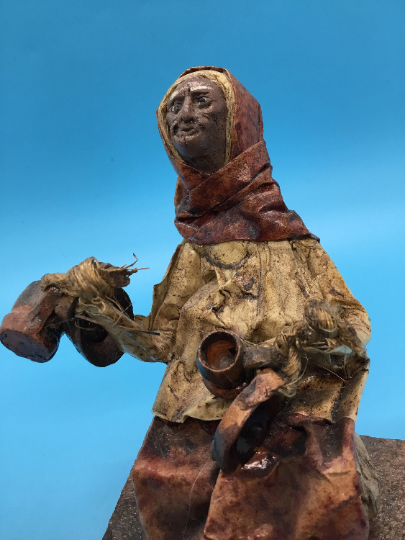
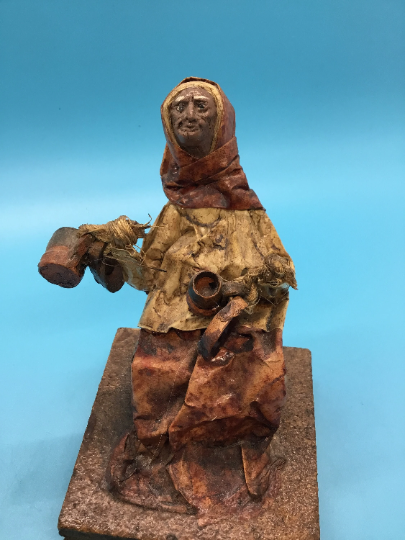



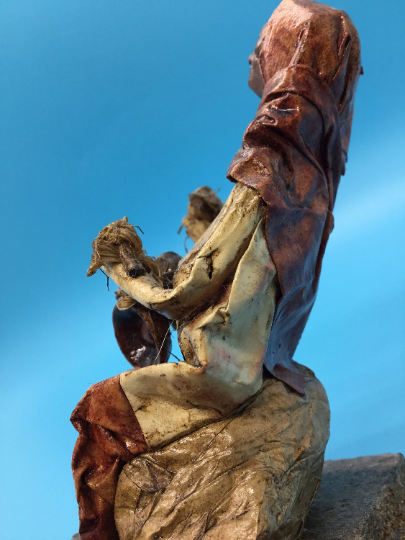



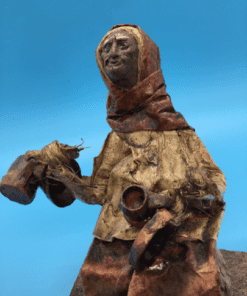












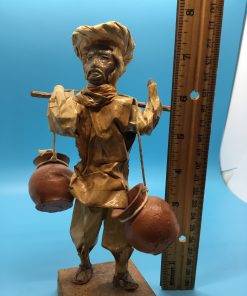



Reviews
There are no reviews yet.